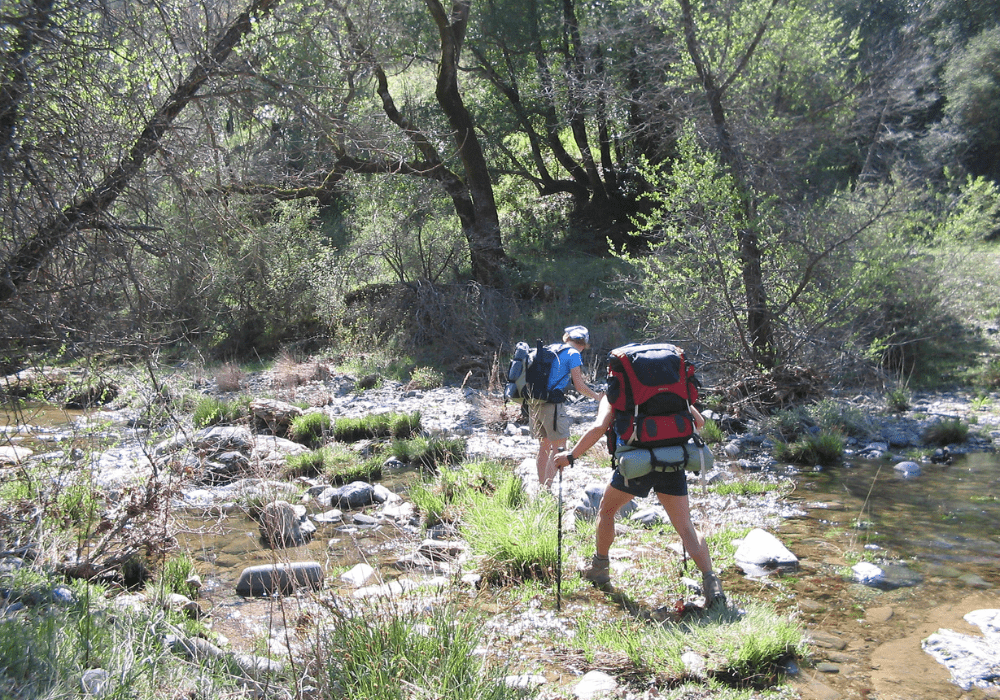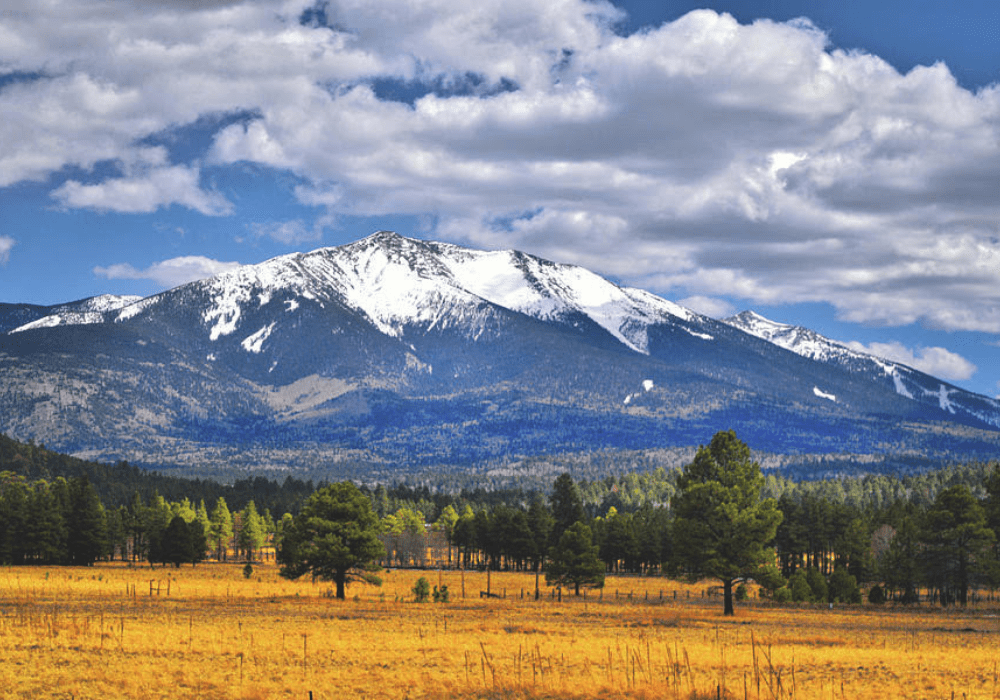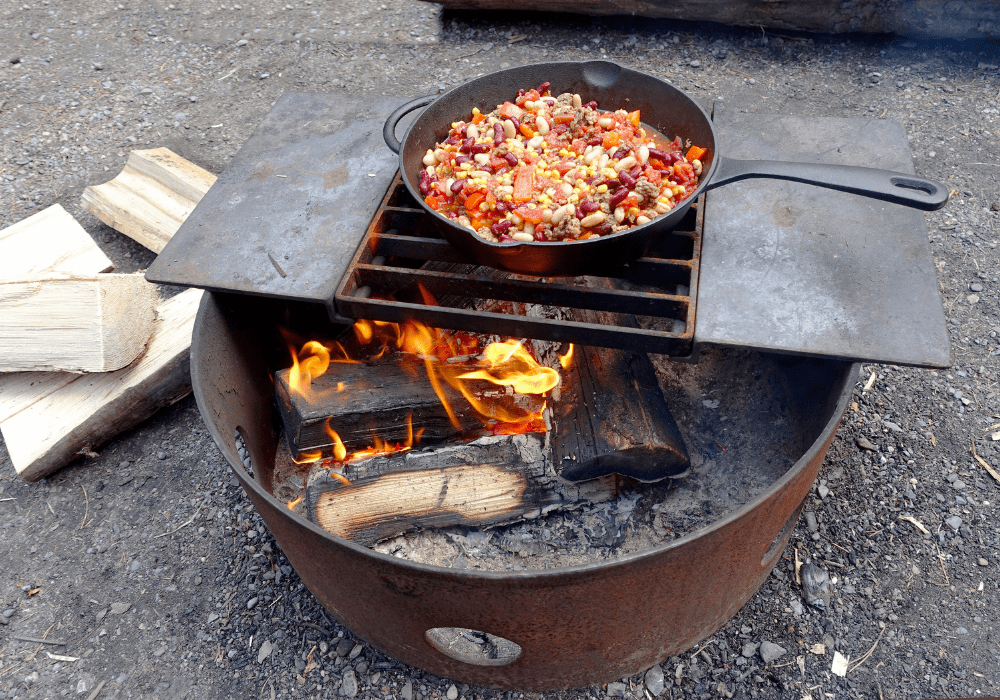
10 Great Backpacking Tips – A Top Hikers Advice
Backpacking blends hiking and backcountry camping into one enjoyable activity.
You get to go out of the beaten path and into the wilds with nothing but the things you carry on your back.
Sometimes you finish your trip with no snags. Sometimes you need to cut your trip early and go home.
To avoid the latter, you need to think ahead and cover all bases.
The thing is:
This may be easier said than done — especially if you’re a beginner backpacker.
Table of Contents
Immerse Yourself in the Outdoors
Much of the things you learn backpacking you learn through trial and error. To save you the trouble here’s a few tips I’ve compiled over my years of backpacking.
1. Be Prepared
By far the best piece of advice you’ll ever get. Backpacking in the wilderness is fun. Backpacking knowing you’ve prepared for everything is even more fun.
Being prepared takes a bit of foresight (or experience) to get right.
After you’ve decided where to go, prepare what you need to bring. Think about your primary gear, food, water, clothing, sun/bug protection, camp bathroom, tools/repair kit, navigation, emergency supplies, and wildlife supplies. Also, don’t forget to bring necessary IDs, keys, credit cards, or cash.
If you’re a complete backpacking novice, consult with experienced backpackers, especially ones with experience in your planned destination.
2. Inform a Friend/Family Member
Anything can happen out in the wilderness. You never know when an emergency crops up.
What’s more:
There’s often no cellphone signal in the rugged mountains or secluded backcountry.
This is why it’s important to inform a friend or family member that you’re going on a backpacking trip. Tell them when you’re going and when you expect to return. You can then leave them a trip itinerary showing your planned route and stopping points.
Doing this lets your friend/family member know when to call for help and helps rescuers know exactly where to search for you.
3. Inform Your Bank
If you’re planning to go backpacking overseas, it’s also a good idea to inform your bank.
Your bank will notice suspicious transactions going on overseas using your account. They’ll then promptly suspend your account and contact you to confirm if the transactions were legitimate.
That can be a problem when you’re in a hurry and your credit card gets rejected.
You see:
To your bank, any transaction using your account in any other country than the one you’re currently in is a “suspicious transaction”. Informing them of your planned trip, what date you’ll be there and when you’re returning will keep you from getting stranded in another country without any money.
4. Be Physically and Mentally Ready
Apart from preparing the things you’ll need on your trip, you also have to prepare yourself — physically and mentally. This is especially helpful if you’re a beginner.
Think about the terrain you’re liable to face on your trip. Are there a lot of hills? How high is the elevation? Will there be lots of uneven terrain like tree roots, rocks, or sand? Will you need to balance yourself on narrow walkways or climb over logs or boulders?
Finding the answers to these questions will help you train your body for the rigors of your upcoming trip.
Likewise, you’ll also have to prepare yourself mentally.
What’s the weather or climate going to be like? Will your trip allow for several breaks? What dangers do you have to watch out for? It never hurts to Google everything you need to know about your planned destination.
Being mentally prepared for your trip ensures that fewer bad surprises.
5. Don’t Be an Obvious Tourist
When in Rome, do as the Romans do.
If you’re going overseas, don’t make yourself look too much like a tourist. People like to pick on travelers by charging them exorbitant rates and playing tricks on them. Thieves, especially, can spot a tourist a mile away.
If you’re overseas and have to go into a city or town, carry only what you need. Don’t call attention to yourself by lugging around a huge backpack. Try to blend in with the locals and use maps you’ve saved on your phone (more on this later).
6. Save Offline Maps
When in unfamiliar territory, save offline maps as soon as you get a wifi signal. You can use offline maps even after that wifi signal is gone. This allows you easier navigation even without the need for that huge paper map you bought at the local gas station.
7. Sleep With Your Water Bottles
Hiking a long trail while lugging around a heavy backpack is hard work. Needless to say, you’re going to be sweating — a lot. Keeping yourself hydrated in these situations is critical to avoid headaches, nausea, and vomiting that often accompanies dehydration.
If you’re going on a backpacking trip where it’s cold, the last thing you’d want is to wake up and downing a bottle full of ice water. While you can always warm it up, that may take too much time.
The solution here is to keep your water bottles in your sleeping bag before you hit the hay. Make sure your bottles are completely sealed. You may want to give them a good shake before stuffing them inside your sleeping bag.
This not only siphons excess body heat while you’re in your sleeping bag but also ensures you have a warm bottle of water ready to drink when you wake up.
8. Filter Water with a Bandana/Sock/Buff/Coffee Filter
While on the subject of hydration, sometimes you simply run out of potable water despite bringing along what you thought was a lot. In this situation, you’ll have to make do with water that nature gives you.
The problem is:
Nature often gives us less than the fresh clean mountain spring water we tend to see in television ads. What you might find maybe downright murky water in a muddy puddle. While it’s a good idea to pack a water filter, turbid water will clog your filter in no time.
Instead, use a spare sock, bandana, buff, or coffee filter to get rid of most of the large particles and sediments from the water. You can then run this filtered water through your water filter then heat it to a rolling boil before you finally drink up.
9. Use Plastic Bags to Waterproof Your Phone
Sometimes you’re backpacking in a place where there’s too much water. Backpacking in a rainforest, swamp, or coastal area often means your everyday gadgets are in danger of getting soaked and becoming useless.
While there are waterproof bags and containers available on the market, the easiest fix comes in the form of a simple plastic bag.
Plastic bags let you waterproof anything you can put into it. They’re virtually weightless, dirt cheap, and can be folded and packed into even the smallest pocket.
To avoid having to waste time tying and untying your plastic bag, you go for those resealable plastic baggies used to store sandwiches.
10. Be Familiar with Poisonous Plants
Experts recommend us to graze on food while out on the trail. But when your trail mix runs out, you may be tempted to pick those dark purple berries you found on some bushes.
Maybe you’re looking for some herbs to steep in your warm cup to make some tea.
Perhaps you found what you thought were wild truffles and plan to chop them up and have some mushroom soup.
Maybe you’re looking for an insect repellant or antiseptic plant to help you deal with those pesky insect bites.
STOP.
If you aren’t familiar with the local plant life, you may be in for a world of hurt.
Poison ivy, fly agaric, and poison oak are just some of the most common poisonous plants and fungi.
Making sure to learn about and familiarize yourself with the poisonous plants (and animals) that you can encounter on your trip can save you from cutting your trip early or worse.





Pingback: Backpacking Meal Planning 101 - AdventureHacks